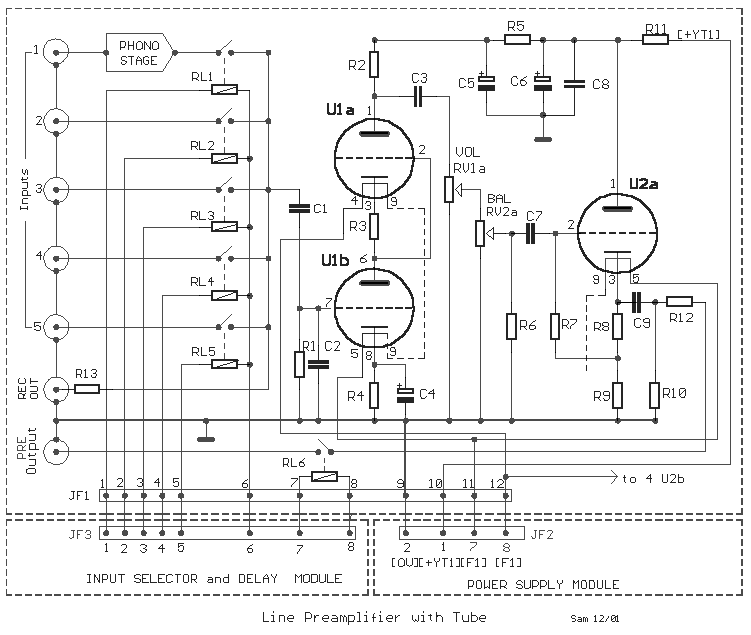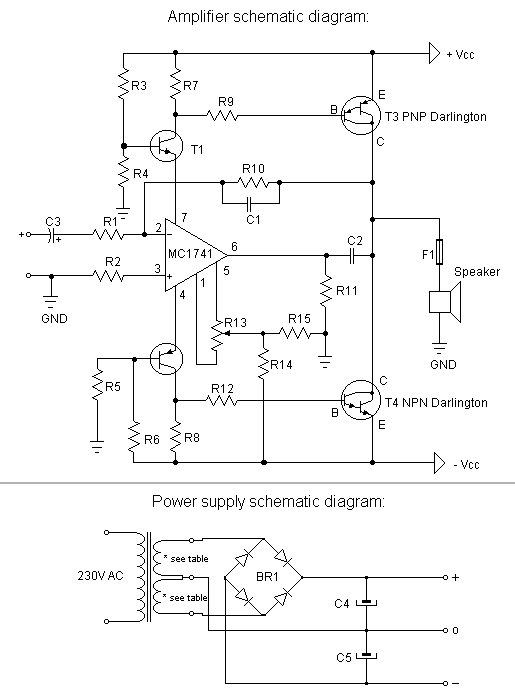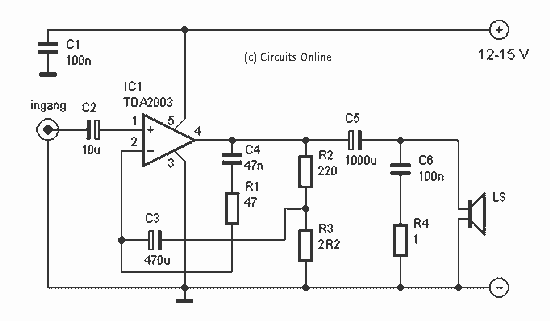
Phono amplifier

Used when maximum input impedance is required or when the signal attenuation of the voltage divider volume control is undesirable.
In electronic circuit design, achieving maximum input impedance is often critical, particularly in applications involving sensitive signal processing. The use of high input impedance circuits minimizes the loading effect on the preceding stage, thereby preserving the integrity of the signal. This is especially important in audio applications where voltage divider volume controls can introduce unwanted signal attenuation, negatively affecting audio quality.
To implement a circuit that maintains high input impedance, a buffer amplifier, such as a FET or an operational amplifier configured as a voltage follower, may be employed. This configuration allows the circuit to present a high input impedance while driving a lower impedance load effectively. The operational amplifier's feedback mechanism ensures that the output voltage closely follows the input voltage, thus preventing any significant voltage drop across the input.
In scenarios where a voltage divider is utilized for volume control, careful consideration must be given to the resistive values chosen. High resistor values can lead to increased input impedance but may also introduce noise and susceptibility to interference. Conversely, lower resistor values can mitigate these issues but at the cost of reduced input impedance. Therefore, a balance must be struck between achieving the desired volume control and maintaining high input impedance.
In summary, when designing circuits that require maximum input impedance, especially in the context of volume control, it is essential to consider the implications of using voltage dividers and to utilize buffering techniques to ensure signal integrity and quality.Used when maximum input impedance is required or the signal attenuation of the voltage divider volume control is undesirable.
In electronic circuit design, achieving maximum input impedance is often critical, particularly in applications involving sensitive signal processing. The use of high input impedance circuits minimizes the loading effect on the preceding stage, thereby preserving the integrity of the signal. This is especially important in audio applications where voltage divider volume controls can introduce unwanted signal attenuation, negatively affecting audio quality.
To implement a circuit that maintains high input impedance, a buffer amplifier, such as a FET or an operational amplifier configured as a voltage follower, may be employed. This configuration allows the circuit to present a high input impedance while driving a lower impedance load effectively. The operational amplifier's feedback mechanism ensures that the output voltage closely follows the input voltage, thus preventing any significant voltage drop across the input.
In scenarios where a voltage divider is utilized for volume control, careful consideration must be given to the resistive values chosen. High resistor values can lead to increased input impedance but may also introduce noise and susceptibility to interference. Conversely, lower resistor values can mitigate these issues but at the cost of reduced input impedance. Therefore, a balance must be struck between achieving the desired volume control and maintaining high input impedance.
In summary, when designing circuits that require maximum input impedance, especially in the context of volume control, it is essential to consider the implications of using voltage dividers and to utilize buffering techniques to ensure signal integrity and quality.Used when maximum input impedance is required or the signal attenuation of the voltage divider volume control is undesirable.
.gif)




